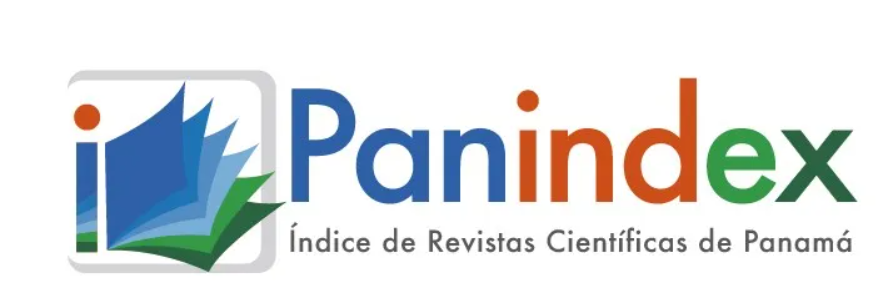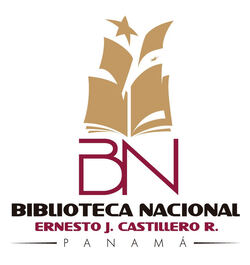The content of the publications and the links suggested in them are the sole responsibility of the authors and not of the Metropolitan University of Education, Science and Technology (UMECIT) or of the journal ORATORES. They are protected by international copyright laws as well as the logos of UMECIT AND ORATORES, hence their reproduction is totally prohibited.
This work is licensed under a Creative Commons Attribution-NonCommercial-NoDerivatives 4.0 International License.
The authors maintain the copyright and transfer the right of the first publication to the journal, with the article registered with Creative Commons Attribution-NonCommercial-NoDerivatives License, which allow others They can download the works published in this magazine and share them with other people, as long as their authorship is recognized, but they cannot be changed in any way nor can they be used commercially.
Authors are recommended to include their work in social networks such as Researchgate and institutional repositories once the article or visible fact has been published on the journal page, without forgetting to include the digital document identifier and the name of the journal.



Abstract
Traditionalists and modernists, preservation of the authentic in the face of globalization, “art for art, knowledge for knowledge” Canclini (1989, p. 17), situation without borders, intervention of experimentation and innovation, myths for scientific knowledge, crafts by exploitation of resources, change of books and reading due to the massification of the media and information and their limited depth of the word. In this writing, a position is maintained from the relevance and love for history, cultural identity and education. In this story, one among the hundreds of indigenous peoples of Colombia, the Mhuysqas, taken as a case study, is considered in an experience of life and education from indigenous roots and from homeschooling. Thus, it starts as a premise of transformation in a multicultural world, a biodiverse Colombia with identity and subjectivities towards interculturality, as a way towards the rescue of traditions and modern citizenship. A look at the culture and history of the Mhuysqas people and the formation of a child, in which recognition and identity in multiculturalism and for interculturality are called, from education as an engine of change, with a modern vision of globalization, with the aim of continuing to innovate in educational practices through the recognition of cultural roots and the search for an identity society.
Keywords
References
Arfuch, L., Catanzaro, G., Di Cori, P., Pecheny, M., Robin, R., Sabsay, L. y Silvestri, G. (2005). Identidades, sujetos y subjetividades. Compilado por Leonor Arfuch -2ª ed. Buenos Aires: Prometeo libros.
Arnaiz, P. y De Haro, R. (2004). Ciudadanía e Interculturalidad: claves para la educación del Siglo XXI. Educatio Siglo XXI, N°22. Recuperado de https://revistas.um.es/educatio/article/view/97/82
Ayuda en Acción. (2018). Las 102 Comunidades indígenas en Colombia. Recuperado dehttps://ayudaenaccion.org/ong/blog/derechos-humanos/comunidades-indigenas-colombia/
Ayuste, A., Escofet, A., Gros, B., Payá, M. y Rubio L. (2018). El Codiseño como metodología de investigación e innovación educativa: el potencial de la participación. En Educación 2018-2020. Retos, Tendencias y Compromisos.IRE- UB: Barcelona.
Bauman, Z. (1999). La globalización: consecuencias humanas. México: FCE.
Constitución Política de Colombia. (1991). Asamblea Nacional Constituyente, Colombia, 6 de Julio de 1991. Artículos 27, 67 y 68.Bogotá
El Sirirí. (2018).Cabildo Mayor Muisca amanece en Oriente. Recuperado dehttps://n9.cl/1f8n
Fundación Universitaria Cafam. (2017). Ruta de la Leyenda del Dorado. Convenio de Asociación N°. 223 de 2016 IDT y 523 de 2016 de IDECUT. Bogotá: Fundamentos de la Cultura Mhuysqa-1.
García Canclini N. (1990). Culturas Híbridas. Estrategias para entrar y salir de la modernidad. Cultura Libre. Editorial Grijalbo: México DF.
Giménez, C. (2003). Pluralismo, Multiculturalismo e Interculturalidad. Propuesta de clarificación y apuntes educativos. Universidad Autónoma de Madrid. Revista Educación y Futuro: Revista de Investigación Aplicada y Experiencias Educativas n°8, Editorial CES Don Bosco-EDEBË, pp. 9-26.
Martín, M y Jabonero, M. (Coord). (2017). La Nueva Agenda Educativa para América Latina: Los Objetivos para 2030. Fundación Santillana. Universidad de Alcalá/IDE. ISBN: 978-84-141-1178-9
Mena, O. (2020). Del Colegio a la sala de la casa: Homeschooling en Colombia. Revista Diners. Recuperado dehttps://revistadiners.com.co/tendencias/66245_del-colegio-a-la-sala-de-la-casa-homeschool-en-colombia/
Molano, O. (2007). Identidad cultural un concepto que evoluciona. Revista Opera, (7), 69-84. ISSN: 1657-8651. Recuperado dehttps://www.redalyc.org/articulo.oa?id=675/67500705
Lleixà, T.; Gros, B.; Mauri, T.; Medina, J.L (eds.) (2018) Educación 2018-2020. Retos, tendencias y compromisos. Barcelona:IRE-UB Disponible en: http://www.ub.edu/ire/ISBN: 978-84-09-02933-4
Tubino, F. (2005). La praxis de la interculturalidad en los Estados Nacionales Latinoamericanos. Cuadernos Interculturales, 3 (5).ISSN: 0718-0586. Recuperado de https://www.redalyc.org/articulo.oa?id=552/55200506
Reyes, J. (Prod.) y Angulo A. (Dir.). (2019). El Sendero de la anaconda. En Netflix. Colombia: Caracol Televisión, Laberinto Cine y Televisión.
Walsh, C. (2009a). Interculturalidad Crítica y Educación Intercultural. Construyendo interculturalidad crítica. La Paz: Convenio Andrés Bello.
Walsh, C. (2009b). Interculturalidad, Estado, Sociedad: Luchas (de)coloniales de nuestra época. Universidad Andina Simón Bolívar.Quito: Ed. Abya-Yala.
Downloads
Publication Facts
Reviewer profiles N/A
Author statements
- Academic society
- Universidad Metropolitana de Educación, Ciencia y Tecnología
- Publisher
- Universidad Metropolitana de Educación, Ciencia y Tecnología



















